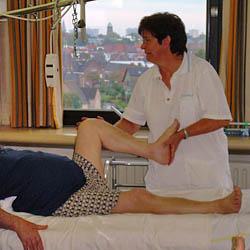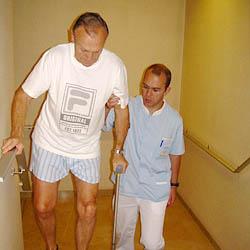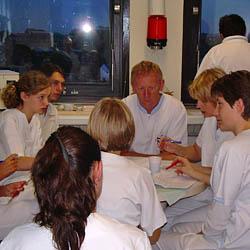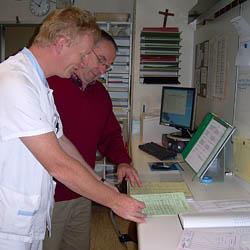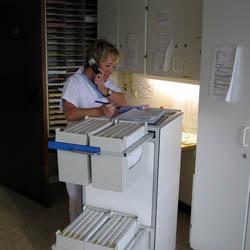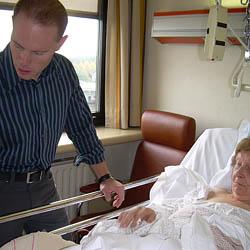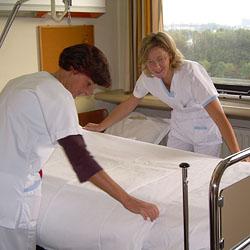After hip surgery
Chronological course
Day of surgery
After staying a few hours in the awakening department, you can return to your room. The operated leg lies in a high gutter of mousse to ensure a comfortable and ideal position. Thanks to an adapted pain medication schedule, the majority of patients experience little to no pain.
First day after surgery
The physiotherapist teaches you certain exercises: moving the feet and the ankles and stretching the leg muscles. These movements are important to stimulate blood circulation and avoid blood clots.
Second day after surgery
The nurse takes care of the wound: the drainage tube is removed during the procedure and a new dressing is applied. Afterwards you can sit on a chair for the first time 'out of bed', of course with help of the staff. You will receive a blood-thinning syringe every day from the nurse to prevent blood clots or phlebitis.
The next days
You will learn to take steps again with a walking frame or crutches. Support on the operated leg is permitted and desirable. The physiotherapist will teach you which attitudes to avoid and will guide you taking steps until you can walk around independently again with 1 or 2 stools.
Depending on the recovery you can go home between the fifth and the seventh day after the operation. During your stay at the hospital, a radiography to check the operated hip will also take place.
The previous scheme is usually accelerated for patients with a resurfacing prosthesis. One of the main reasons for this is that the patients who receive such a prosthesis are usually younger and more active.
Early complications
Complications in hip prostheses are rare and certainly not of such nature to live in fear towards the operation.
The formation of blood clots or phlebitis is avoided by daily blood-thinning Clexane injections. Subsequent bleeding is extremely rare.
Hip dislocation or luxation is usually due to a wrong movement.
Infection or contamination is prevented by the administration of antibiotics during the procedure.
A minimal leg extension -0.5 to 1 cm- is necessary in exceptional cases for hip stability.
A banal swelling of the operated leg occurs regularly during the first weeks and then gradually disappears completely. A temporary nerve failure with a weak foot is extremely rare.

